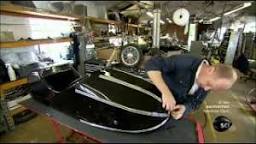motorcycle and sidecar law uk

We often get asked which license is required to ride a sidecar and all sorts of other legal questions. We have some difinitive answers below for you. You can no longer ride an outfit on a CBT only. Can I take my CBT and Full test on a sidecar outfit? You must be registered disabled or have a note from your Doctor, stating that it would be unsafe for you to take the test on a solo machine, to be allowed to take any practical motorcycle test on a sidecar outfit. How is the test different for sidecar combinations? Motorcycle sidecar combinations used by candidates with a physical disability are not required to carry out the manual handling exercises or avoidance exercise. The candidate is however required to carry out the first circuit bend and the controlled stop in addition to the emergency stop exercise and additional time should be allowed for this test to be conducted. The decision on whether to use a left or right circuit should be based on the characteristics of the machine, generally if the sidecar is positioned on the left of the machine a right handed circuit should be used and vice versa.

The examiner should remove cones number two and four from the slalom exercise to account for the increased turning circle of combination units, there should normally be no need to alter the two cones used for the figure of eight exercise. The width between the cones associated with the speed measuring device and the width of the controlled stopping box should be increased to 1 � times the width of the outfit. The U turn may be carried out from either left to right or right to left side of the area, depending on the configuration of the combination unit some cones may need to be repositioned to take into account the increased turning circle of combination units only. The CBT course should be carried out in the same vein i.e. all reasonable adjustments should be made to accommodate the customer�s circumstances. A note will need to be made on the DL196 at the time of issuing, by the ATB denoting any restrictions. The only time when information should be entered into the category restriction box, is when CBT courses are conducted on a motorcycle sidecar combination, or on a moped with more than two wheels.

In these cases, �motorcycle sidecar combination/moped with more than two wheels� should be written in the category restriction box. Can I ride a sidecar outfit on my car license?All car drivers, regardless of when they took their car test, must pass a CBT before riding an outfit on the road. But it's the same as a trike, isn't it? No, there are very different rules for trikes, which are a different category of vehicle altogether. Can I take a pillion or sidecar passenger if I am riding an outfit with a CBT? No, you cannot take any passengers at all. I have passed my test with a category 'A' License (restricted), what outfit can I ride? You are restricted to riding an outfit with a power to weight ratio no greater than 0.16 kW/kg for 2 years from your test date. After that you may ride any sidecar outfit subject to current age restrictions. What is the law regarding sidecars fitted to the right hand side of a mmotorcycle? If the motorcycle was first registered before 01/09/1981 you can legally ride it in the uk with a right hand sidecar fitted.

Mopeds with speed range of 25 km/h to 45 km/h Compulsory basic training (CBT), theory test, practical test on all powered 2-wheeled moped Small 3-wheelers (up to 50 cc and below 4 kW)
bulletproof motorcycle jacket CBT, theory test, practical test
clover motorcycle clothing uk Light quadricycles (weighing under 350 kg, top speed 45 km/h) Same as AM plus 2 or 3-wheeled mopeds with top speed of 25 km/h Light motorcycle up to 11 kW (and a power-to-weight ratio not more than 0.1 kW per kg) and 125 cc Motor tricycles with a power output not more than 15 kW Standard motorcycle up to 35 kW (and a power-to-weight ratio not more than 0.2 kW per kg), bike mustn’t be derived from vehicle more than twice its power Direct access route - theory and practicalProgressive access route - 2 years experience on A1 motorbike and a further practical test

Unrestricted motorcycles in size/power, with or without a sidecar, and motor tricycles with power output over 15 kW Direct access route - CBT theory and practical (you must be at least 24)Progressive access route - held an A2 licence for a minimum of 2 years - practical test (21 or over) 24 (direct) or 21 (progressive access) You don’t need to take the theory or motorcycle tests to apply for a provisional licence. Read about the rules for the motorcycle theory test and practical riding test. Last updated: 1 December 2016 Help us improve GOV.UK Don’t include personal or financial information like your National Insurance number or credit card details. What you were doingFind out the practical and legal considerations to take into account when arranging sidecar insurance for your motorbike. Ask whether you need to tell your insurer the sidecar value separately, or include it in the entire vehicle value You'll need to disclose the make, model and value of your sidecar to your insurer

There are specialist insurers that can cover kit and self-build sidecars 's quote process whether you need cover for a sidecar Motorcycle sidecar outfits have a rich automotive history. These distinctive three-wheeled vehicles were very popular during the first half of the last century as a more affordable means to become mobile, and as army and police utility vehicles. They’ve also been influential in the foundation of much larger manufacturers - Jaguar Cars, for instance, developed from the Swallow Sidecar Company. While much more of a rarity on UK roads today, motorcycle sidecar outfits are still enjoyed by a passionate community of enthusiasts across Britain. They’re also popular in the world of motorsports with sidecar classes in various events such as motocross, enduro, speedway and grasstrack. The sidecar is not classed as a vehicle itself, and when fitted to the motorcycle to create a three-wheeled combination the vehicle is not classed a trike.

The drive itself is equally one-of-a-kind, as the sidecar wheel is not aligned with the rear wheel, creating an asymmetrical handling that requires more power while turning left, and less power when turning right. On-road or off-road, sidecars are truly unique. But is handling motorbike insurance cover for your sidecar just as unique? In principle, insuring a manufacturer-made sidecar should be straightforward; a sidecar is classed as an accessory to the motorcycle that tows it. So, when it comes to organising cover for your motorcycle sidecar outfit, the policy will be a standard motorcycle policy with all details of the sidecar – its make, model and value – disclosed to the insurer on inception. As with any niche vehicle, not all insurers will cover a motorcycle sidecar outfit. Due to the unique nature of a motorcycle sidecar outfit, it’s advisable to speak to your chosen cover provider directly before agreeing to any policy. This is to confirm they have the specific details of your individual outfit and any modifications you may have made to your bike in order to attach the sidecar safely.

When establishing cover, it’s advisable to enquire with your insurer whether you need to inform them of the sidecar value separately, or include the value of it as part of the entire vehicle value. For example, motorbike insurers Bikesure and Bennetts both include the sidecar cost as part of the entire value of the vehicle. “We don’t rate on the value of the sidecar itself and we don’t typically charge an extra premium for it,” said Matt Long of Bennetts. “What we ask is that you include the value of the sidecar when you tell us the value of your motorcycle. We rate the policy overall and not individually.” If you’ve constructed your own sidecar, your motorcycle sidecar outfit must successfully pass the government’s Motorcycle Single Vehicle Approval Scheme. More details on what is required and a list of UK test centres can be found on the government's website.† As with all self-build and kit constructions, less insurers will offer you cover, but there are motorcycle insurance specialists who understand the nature of this labour of love and can cover you appropriately if the outfit is certified road legal.

Insuring a motorcycle sidecar outfit can become more of a challenge when considerable modifications have been made to the motorcycle itself. Motorcycle modifications that are common when adding a sidecar include: While all of these changes have been devised to ensure a safer ride, they’re still considered non-standard modifications by both insurance companies and the DVLA. As such, once fitted they need to be fully disclosed to both the DVLA and your insurer. Motorcycles have a long history of modification culture so any changes made are likely to be known and experienced by insurance companies previously Each provider will have its own set of criteria when it comes to covering motorcycles with non-standard modifications and it’s essential that all changes made to your bike are explained in full detail to the insurer before cover commences. Those new to riding a motorcycle sidecar outfit should seek advice or training from existing riders before committing to owning one.

A sidecar passenger is the full responsibility of the rider It’s unlike any other drive and should be approached as such. The Federation of Sidecar Clubs† is a great way to find enthusiasts in your area. Many of them will be happy to share their experiences and riding tips. As when carrying pillion passengers on a motorcycle, a sidecar passenger is the full responsibility of the rider. Before commencing any journey, new passengers should be instructed to remain in the sidecar at all times and not act irresponsibly. While there’s no UK law regarding helmets for passengers, it’s highly advisable that they should wear one. Note that many countries in mainland Europe do enforce a law regarding helmets.† Unlike trikes, which require a car licence, the licence required to ride motorbikes with attached sidecars is a motorcycle licence. Riders who have completed their CBT but are still riding with ‘L’ plates can tow sidecars, but they’re unable to carry passengers therein.